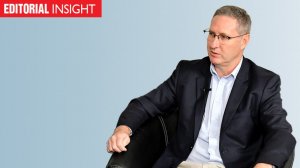A leaked slide on the implementation of the Integrated Resource Plan 2019 (IRP 2019) included as part of a larger presentation made during the African National Congress’s (ANC’s) January lekgotla offers visibility, at last, of government’s approach to the procurement of utility-scale projects.
While it’s troubling that the ANC was given this insight ahead of those potential investors that have been desperately seeking such for more than a year, it nevertheless signals that procurement progress is now more than likely in 2021.
Outlining prospects for two new renewable-energy bidding rounds in February and September of this year and another for early 2022 also signals that government is intent on closing the chapter on the unhappy period of stop-start procurement, which prevailed for more than four years. The uncertainty caused by government’s lack of adherence to policy between 2014 and 2018, when legally procured projects were finally allowed to proceed, undermined South Africa’s credibility as an investment destination for domestic and foreign independent power producers (IPPs). It also inflicted harm, in some cases irreparably, on those industrial enterprises set up to service the renewables IPP market.
The ANC document also outlines 2021 bidding dates for gas, coal and energy storage and indicates that additional Ministerial determinations will be considered “taking into account Eskom plant performance and plans”.
This could prove important for two reasons: firstly, because the current Ministerial determinations do not reflect the full allocations outlined in the IRP 2019 and, secondly, because those allocations are premised on overly optimistic assumptions about the performance of the Eskom coal fleet. In other words, as Eskom CEO Andre de Ruyter has already indicated, the 11.8GW new-build catered for in the current set of determinations is unlikely to be sufficient to address the supply-demand imbalance that has afflicted South Africa for more than a decade.
To address the problem decisively, yet more determinations will be required for utility-scale projects, alongside a massive upscaling of embedded or distributed generation capacity across households, factories, mines and farms.
Thankfully, this realisation appears to have finally dawned within the ANC, with President Cyril Ramaphosa making specific reference to embedded generation in his remarks following the meeting. The lekgotla, he said, had agreed to “pursue several measures simultaneously, including the procurement of new generation sources in line with the IRP 2019, including renewables, the procurement of emergency power, improving the efficiency of Eskom, and enabling more embedded generation by firms”.
Besides building the necessary capacity within the IPP Office to ensure that the procurement rounds run like clockwork, liberating the embedded generation market is now beyond urgent.
Indeed, that market still represents the quickest and cheapest way to begin addressing the country’s load-shedding albatross and creating the platform for a desperately needed economic recovery – a recovery that Ramaphosa acknowledges “will depend to a great extent on the scale and pace at which we can bring new electricity generation capacity on line”.
EMAIL THIS ARTICLE SAVE THIS ARTICLE ARTICLE ENQUIRY
To subscribe email subscriptions@creamermedia.co.za or click here
To advertise email advertising@creamermedia.co.za or click here











